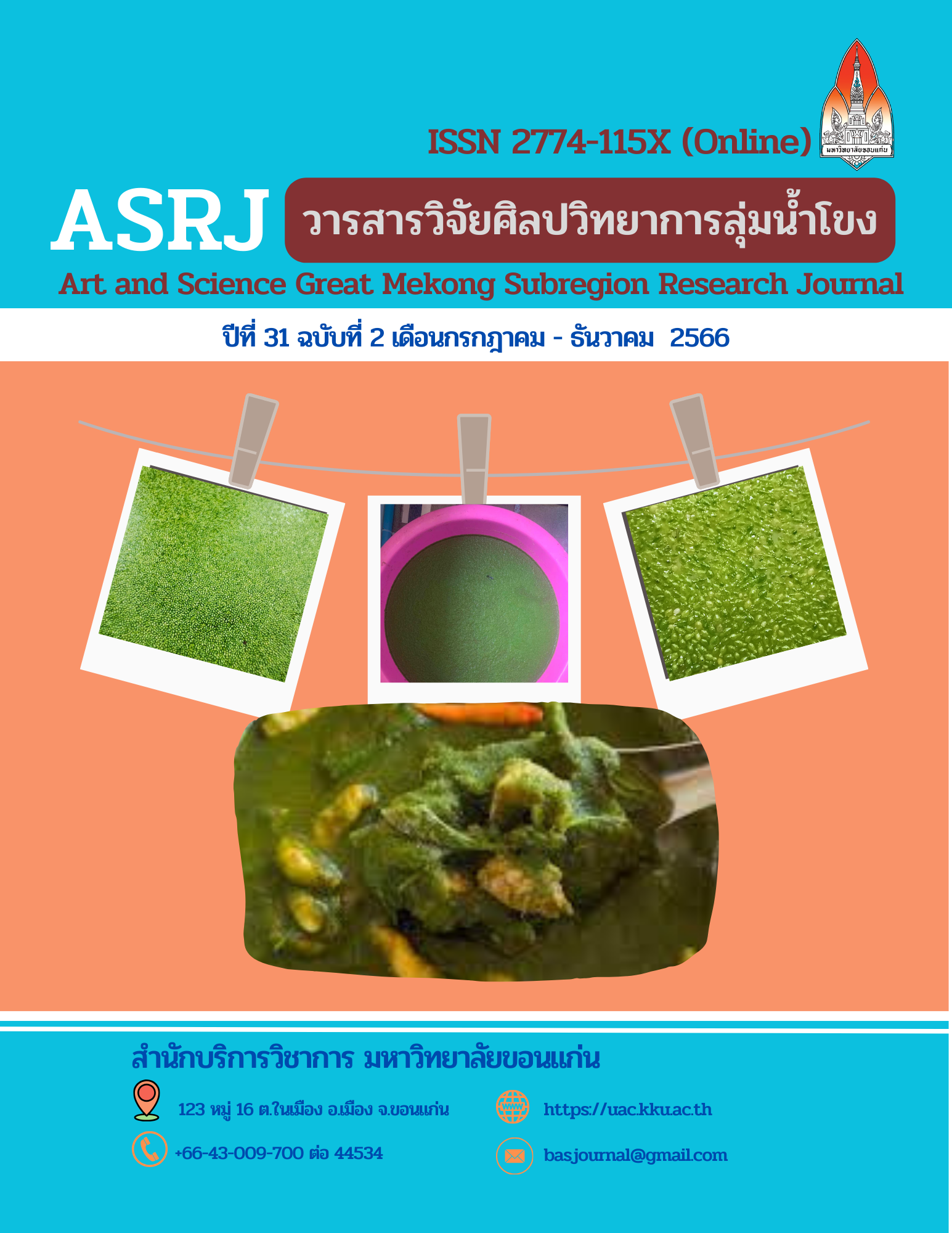การเพาะเลี้ยงไข่น้ำด้วยการใช้แสงไฟทดแทนแสงอาทิตย์ร่วมกับระบบ Internet Of Things (IoT) IoT-Based Light Intensity Effects on Wolffia arrhizal (L.) Wimm. Growth
Main Article Content
บทคัดย่อ
การวิจัยครั้งนี้ มีวัตถุประสงค์ เพื่อศึกษาประสิทธิภาพของการเพาะเลี้ยงไข่น้ำด้วยการควบคุมสภาพแวดล้อมจำลองแสงธรรมชาติโดยให้แสงจากหลอดไฟสำหรับปลูกพืชที่มีความเข้มแสงระหว่าง 7,000-10,000 ลักส์ มีประสิทธิภาพในการให้ผลผลิตที่สูงกว่าการเลี้ยงด้วยสภาพแวดล้อมจากแสงตามธรรมชาติ และสามารถจัดการปัจจัยควบคุมต่างๆ โดยการใช้เทคโนโลยี Internet of Things (IoT) เช่น ความเข้มแสง อุณหภูมิ ความเป็นกรดด่าง และปริมาณปุ๋ย ให้มีความเหมาะสมต่อการผลิตไข่น้ำ โดยให้แสงไฟเป็นระยะเวลา 10 ชั่วโมงต่อวัน และ 24 ชั่วโมงต่อวัน ใช้ระยะเวลาในการทดลอง 5 วัน และติดตามผลการเพาะเลี้ยงไข่น้ำ โดยมีวิธีการดำเนินการวิจัยทั้งวิจัยเชิงปริมาณ เชิงคุณภาพและเชิงทดลอง พบว่า 1) ความสัมพันธ์ระหว่างน้ำหนักต่อจำนวนต้นไข่น้ำ ชุดทดลองที่ 1 มีความสัมพันธ์ (ร้อยละ 97) ชุดทดลองที่ 2 มีความสัมพันธ์ (ร้อยละ 97) และชุดทดลองที่ 3 มีความสัมพันธ์ (ร้อยละ 99.87) 2) ด้านจำนวนไข่น้ำกับจำนวนวันที่เลี้ยงพบว่า ชุดทดลองที่ 1 มีน้ำหนักเฉลี่ย 318.60± 40.03 ต้น ชุดทดลองที่ 2 มีน้ำหนักเฉลี่ย 1,157.40± 159.58 ต้น และชุดทดลองที่ 3 มีน้ำหนัก 6,662.80±428.80 ต้น ซึ่งมีความแตกต่างกันอย่างมีนัยสำคัญยิ่ง (p<0.05) 3) ด้านน้ำหนักไข่น้ำกับจำนวนวันที่เลี้ยงพบว่า ชุดทดลองที่ 1 มีจำนวน 0.0389±0.0025 กรัม ชุดทดลองที่ 2 มีจำนวน 0.1578±0.0133 กรัม และชุดทดลองที่ 3 มีจำนวน 0.9679±0.0547 กรัม ซึ่งมีความแตกต่างกันอย่างมีนัยสำคัญยิ่ง (p<0.05) ผลการศึกษาพบว่าการเพาะเลี้ยงไข่น้ำภายใต้การจัดการปัจจัยควบคุมต่างๆ และสภาพแวดล้อมจำลองแสงธรรมชาติ ทั้งจำนวนต้นเฉลี่ยและน้ำหนักเฉลี่ยสูงกว่าการเพาะเลี้ยงด้วยสภาพแวดล้อมจากแสงตามธรรมชาติอย่างมีนัยสำคัญทางสถิติ (p<.01) และมีแนวโน้มเพิ่มสูงขึ้นตามระยะเวลาที่ให้แสง
Abstract
This research aims to study the effectiveness of cultivating Wolffia arrhizal (L.) Wimm by controlling the environment mimicking natural conditions, using light from bulb plant grow with an intensity between 7,000-10,000 lux. This approach was found to be more efficient in yielding higher production compared to traditional environmental conditions with natural light. Various control factors were managed using Internet of Things (IoT) technology, such as light intensity, temperature, pH, and fertilizer quantity, to optimize Wolffia arrhizal (L.) Wimm production. Light was provided for 10 hours and 24 hours per day during a 5-day experimental period. The research was conducted quantitatively, qualitatively, and experimentally. The findings were as follows 1) The relationship between weight and the Number of egg plant specimens: Experiment set 1 had a correlation of 97%, experiment set 2 had a correlation of 97%, and experiment set 3 had a correlation of 99.87%. 2) The Number of egg plant in relation to the number of days of cultivation: Experiment treatment 1 had an average egg of 318.60± 40.03 egg plant, experiment treatment 2 had an average egg of 1,157.40± 159.58 egg plant, and experiment treatment 3 had an average egg of 6,662.80± 428.80 egg plant. The differences were statistically significant (p<0.05). 3) The weight of egg plant in relation to the number of days of cultivation: Experiment treatment 1 had an average weight of 0.0389±0.0025 g., experiment treatment 2 had an average weight of 0.1578±0.0133 g., and experiment treatment 3 had an average weight of 0.9679±0.0547 g. The differences were statistically significant (p<0.05). The study concluded that cultivating Wolffia arrhizal (L.) Wimm under controlled factors and in an environment mimicking natural conditions resulted in significantly higher average numbers and weights of egg plant specimens compared to cultivation under natural light conditions. The trend increased with the duration of light exposure, as supported by statistical significance (p<.01)


